|
|
 |
|
|
 |
 |
|
|
 |
 |
|
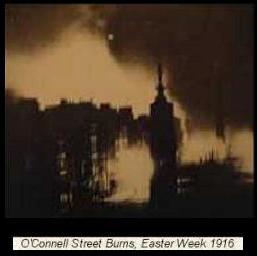
Dublin citizenry took
little notice.
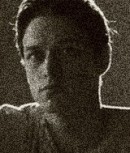
Such
sights
had
become
common
over
the
past
three
years-
Groups of men playing at soldiers.
|
Just before noon on Easter Monday,
April 24th, a group of 150 men strode out of Liberty Hall, then marched toward Sackville Street (now O'Connell Street) a few hundred yards away.
About one fourth
of the marchers wore the dark-green uniform of the Irish Citizen Army, others wore the grey-green of the Irish Volunteers.
Still others--perhaps most of them--wore no uniform.
Armed with an
odd mixture of rifles, shotguns, and handguns, they moved in step, heading straight for the General Post Office (GPO).

|
|
 |
 |
|
|
|
 |
 |
 |
 |
|
|
 |
 |
|
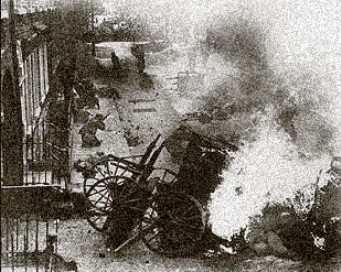
|
Today was different.
When the men arrived at the post office,
their leader, James Connolly,
gave the order to charge.
The guards on duty were taken completely
by surprise…
|
|
 |
 |

|
|
|
 |
 |
 |
 |
|
 |
 |
|
|
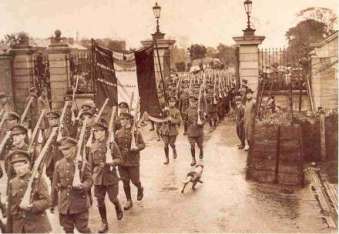
Add your content here
|
|
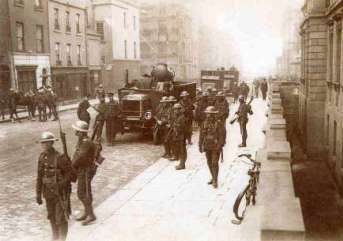
Add your content here
|
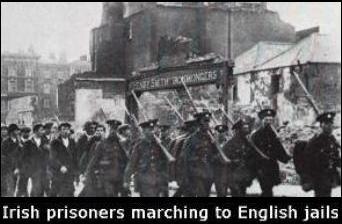
Add your content here
|
|
 |
 |
|
|
 |
 |
 |
 |
|
 |
 |
|
Michael John ("Mick") Collins ~
Mícheál Seán Ó Coileáin was an Irish revolutionary leader. Although most Irish political parties recognize his contribution
to the foundation of the modern Irish state, members and supporters of the political party Fine Gael hold in particular regard his memory, regarding him as their movement's founding father; the party
was originally called Cumann na nGaedhael.
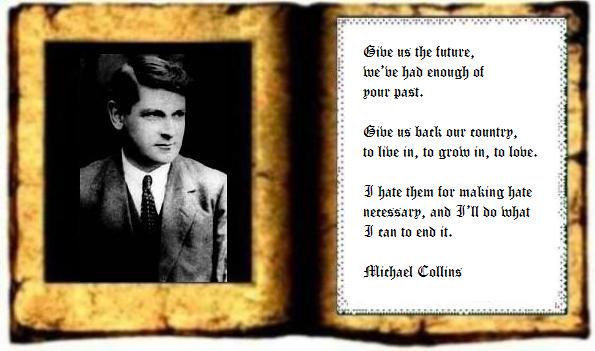
“When you have sweated, toiled, had mad dreams, hopeless nightmares, you find yourself in
London's
streets,
cold and dank in the night air. Think - what have I got for Ireland? Something which she has wanted these past seven hundred years. Will anyone
be satisfied at the bargain? Will anyone? I tell you this; early this morning
I signed my death warrant. I thought at the time how odd, how ridiculous —
a bullet may just as well have done the job five years ago".
En route through County Cork on 22 August 1922 at the village of Béal na mBláth (Irish, "the Mouth of Flowers"), Collins was killed in an ambush which lasted around 40 minutes... Collins was 31 years old when
he died.
Michael Collins
|
|
 |
 |
|
|
 |
 |
 |
 |
|
 |
 |
|
 |
 |
|
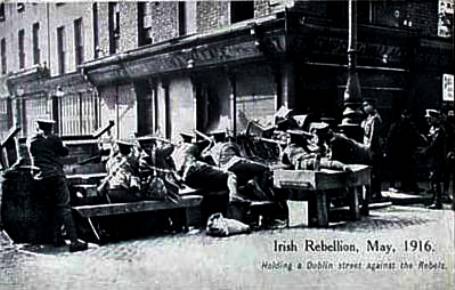
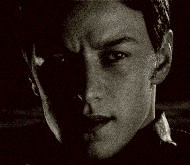
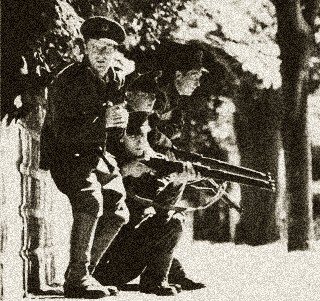
An armed force of about 6000 soldiers sent by the British government to Ireland
in June, 1920, to suppress revolutionary activity: so called from the colors of their uniform.
The Black and Tans as a subject still arouses controversy in Ireland. The Black and Tans were mostly former soldiers
brought into Ireland by the government in London after 1918 to assist the Royal Irish Constabulary (RIC)
in their work.
For a number of years, the RIC had been a target for the IRA. RIC barracks were frequently
attacked and members of the RIC were murdered. Therefore, recruitment to the RIC started to be hit and the RIC found it difficult
to carry out its duties effectively, especially in the remote rural areas of southern Ireland. Never knowing if you were going to be the next target did a great deal
to undermine morale in the RIC.
In 1919, the British government advertised for men who were willing to "face a rough and dangerous
task". Many former British army soldiers had come back from Western Europe and did not find
a land fit for heroes. They came back to unemployment and few firms needed men whose primary skill was fighting in war. Therefore,
there were plenty of ex-servicemen who were willing to reply to the government’s advert. For many the sole attraction
was not political or national pride – it was simply money. The men got paid ten shillings a day. They got three months
training before being sent to Ireland.
The first unit arrived in Ireland in March
1920.
Once in Ireland
it quickly became apparent that there were not enough uniforms for all those who had joined up. Therefore they wore a mixture
of uniforms – some military, some RIC. This mixture gave them the appearance of being in khaki and dark police uniform.
As a result, these men got the nickname "Black and Tans", and it stuck. Some say that the nickname
came from a pack of hunting hounds known as the 'Black and Tans'.
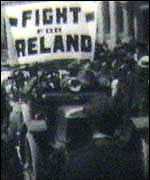
The Black and Tans did not act as a supplement to the RIC. Though
some men were experienced in trench warfare, they lacked the self-discipline that would have been found in the Western Front.
Many Black and Tan units all but terrorized local communities. Community policing was the preserve
of the RIC. For the Black and Tans, their primary task was to make Ireland
"Hell for the rebels to live in". Over 8000 Black and Tans went to Ireland and while they found it difficult to cope with men
who used classic guerrilla tactics against them, those who lived in areas where the Black
and Tans were based, paid the price.
|
|
 |
 |
|
|
 |
 |
|
|
 |
 |
 |
 |
|
 |
 |
|
 |
 |
|

The most infamous attack on the public
came in November 1920. Many people had packed into Croke Park, Dublin, to watch a football match. In retaliation for the murder of fourteen undercover detectives
by the IRA, the Black and Tans opened fire on the crowd, killing twelve people. In retaliation
for this attack, eighteen members of the ‘Auxies’ (a separate part of the Black and Tans)
were killed in Kilmichael, County Cork.
The ‘Auxies’ took their revenge for this by burning down the centre of Cork
and parading around after this event with burnt cork in their caps. Violence, it appeared, only led to even more violence
on both sides.
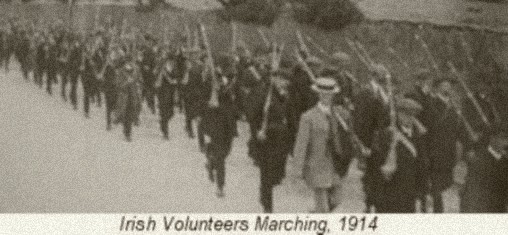
The attitude of the Black and Tans is best summed up by one of
their divisional commanders:
|
"If a police barracks is burned or if the barracks already occupied is not suitable, then the best house in the
locality is to be commandeered, the occupants thrown into the gutter. Let them die there – the more the merrier.
Should the order ("Hands Up") not be immediately obeyed, shoot and shoot with effect. If the persons approaching
(a patrol) carry their hands in their pockets, or are in any way suspicious-looking, shoot them down. You may make mistakes
occasionally and innocent persons may be shot, but that cannot be helped, and you are bound to get the right parties some
time.
The more you shoot, the better I will like you, and I assure you no policeman will get into trouble for shooting
any man."
Lt. Col. Smyth, June 1920 |
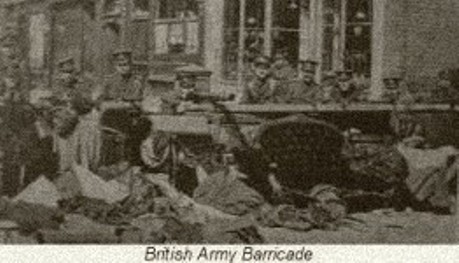
The Black and Tans were not regular troops. There were many examples
of them shooting indiscriminately at civilians as opposed to republican guerrillas. Creameries were also destroyed by the
Black and Tans – almost as a way of economically punishing those who may have been helping
the IRA. Those experienced in trench warfare fighting a seen enemy, were of little use in Ireland.
The Black and Tans were so poorly disciplined and trained for Ireland that their casualty rate was far higher than could
have been imagined when the government first advertised for them. The government in Westminster
quickly realized that they were a liability as even public opinion in mainland Britain
was appalled by a lot of what they did.
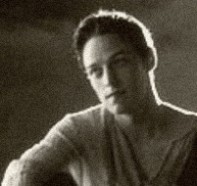
What
did the Black and Tans achieve?
They
served no purpose for the British government as they simply failed to stop what the IRA was doing. However, they did succeed
in getting the republican cause a great deal of civilian support simply because of their acts – people may not have
joined the IRA, but
they were supporters of it and gave what financial help they could to the movement. The Black and Tans were pulled
out of Ireland in ignominy.
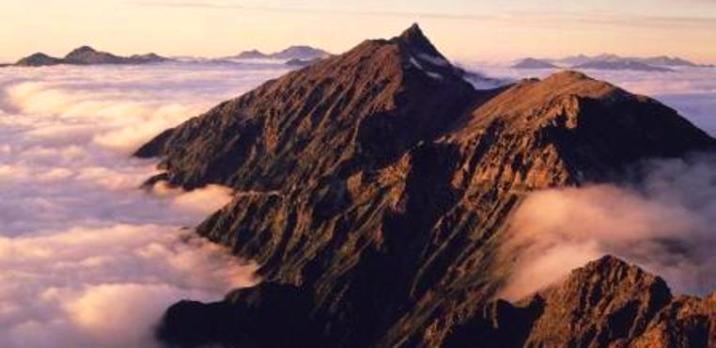
|
|
 |
 |
|
|
 |
 |
|
|
 |
 |

|
|
 |
|
|
|
|
|
 |

